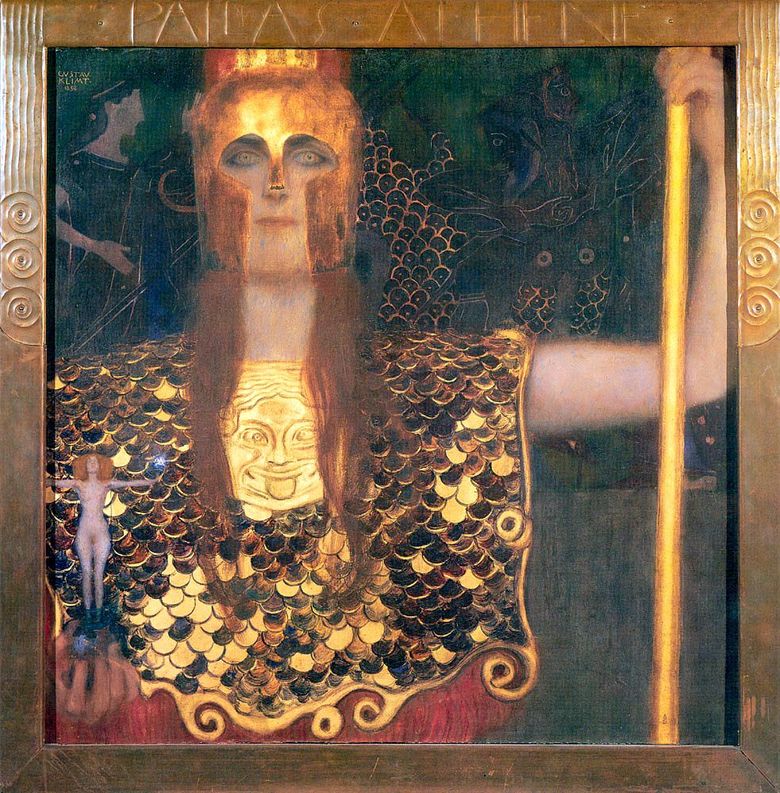
In 1889, in Austria was opened the exhibition of the Vienna Secession, one of the founders of which was the famous modern artist Gustav Klimt. The artists created this association in order to get the opportunity to write and demonstrate paintings, the plot of which at that time was beyond the moral framework of society. Like many other artists’ societies, the Vienna Secession made Pallas as the symbol of Athena. When their first exhibition took place in Vienna, one of the main paintings there was “Athena Pallada” written by Gustav Klimt.
This picture does not look like the other female portraits written by Klimt. Most of his paintings depicted women passionate, refined and sexy. But Athena is different from all of them. She is militant, strong and powerful. Therefore, she became a symbol of secessionists, they wanted freedom of creativity. This picture greatly shocked the critics, and for this in the masses it was called the “demon secession.” Her bright shiny helmet, armor and expressive eyes attract attention.
This picture marked the beginning of the “golden period” of Gustav Klimt’s work. This period got its name because of the gilding, which the artist actively used in most of his works, as well as in this one. This was a new stage in the artist’s work. This period is considered the most successful and fruitful in the artist’s life. Then his best pictures were written.
Athena was interested in Klimt not with her femininity and sexuality, but with her divine essence. Perhaps, because this woman had an unusual appearance. She was different from other goddesses by wearing mens armor and weapons. Despite the fact that she was a woman, she had a male militant character. Thanks to this Athena Pallada is the most powerful of all the women that Klimt ever portrayed.
 Athéna Pallas – Gustav Klimt
Athéna Pallas – Gustav Klimt Hope II by Gustav Klimt
Hope II by Gustav Klimt Poster for the first exhibition of the Vienna Secession by Gustav Klimt
Poster for the first exhibition of the Vienna Secession by Gustav Klimt Adam and Eve by Gustav Klimt
Adam and Eve by Gustav Klimt Virgins by Gustav Klimt
Virgins by Gustav Klimt Panel in the dining room of the palace of Stockle by Gustav Klimt
Panel in the dining room of the palace of Stockle by Gustav Klimt Water snakes II by Gustav Klimt
Water snakes II by Gustav Klimt Judith II by Gustav Klimt
Judith II by Gustav Klimt